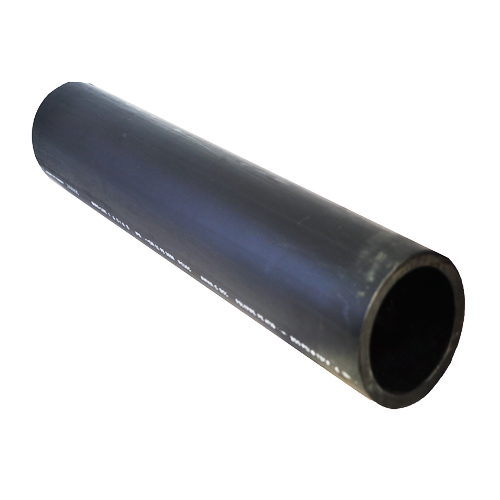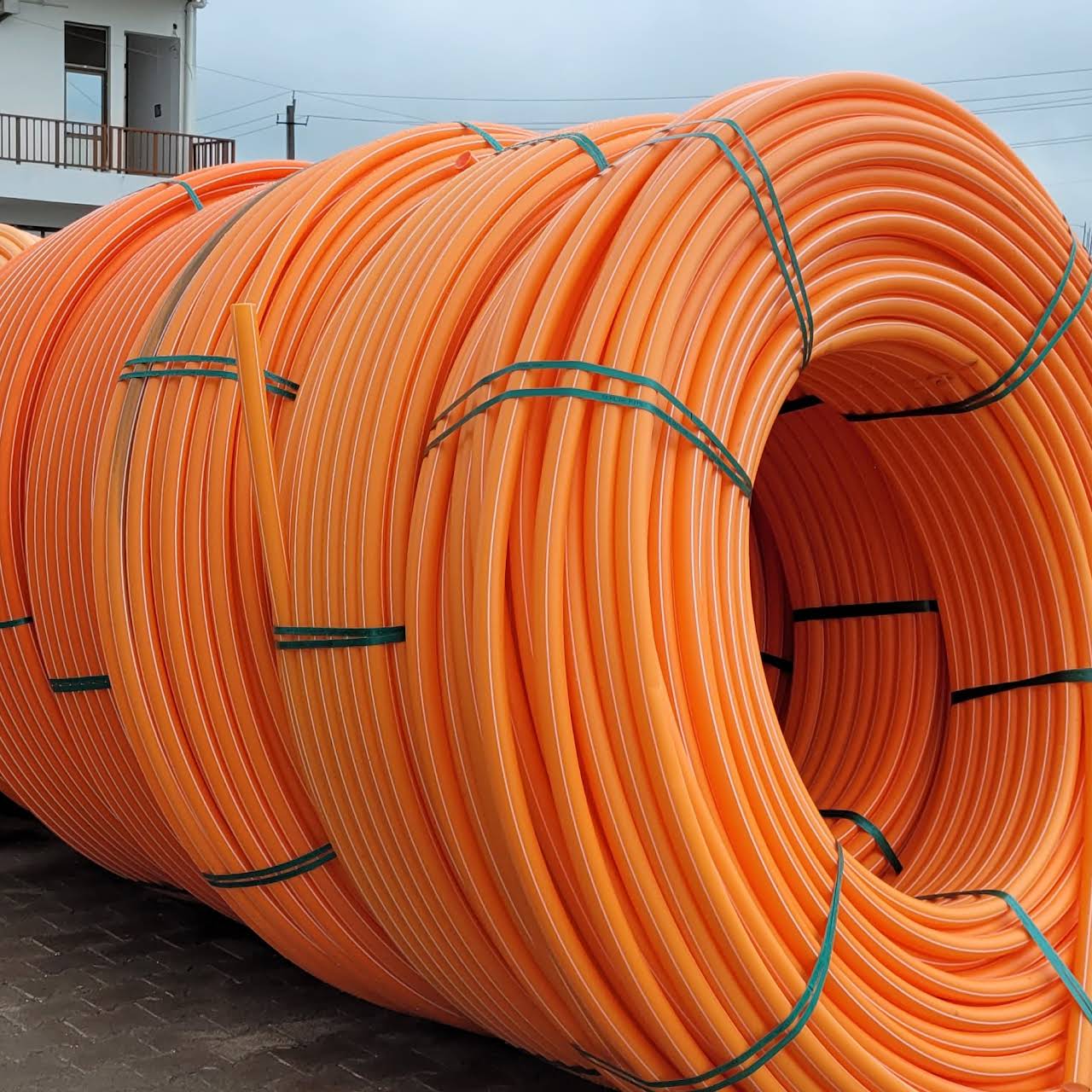Critical Benefits of custom hdpe pipe manufacturing Midland TX for Tailored Performance
Discover the Production Refine Behind High-Quality HDPE Pipe and Its Applications
The production process of top quality HDPE pipelines is complex and methodical. It begins with the selection of basic materials that enhance efficiency. Following this, ethylene goes through polymerization to create material, which is after that shaped via extrusion. Quality assurance is vital, making sure that the last product fulfills stringent criteria. However, the journey of HDPE pipes does not finish with manufacturing. Their applications throughout various industries expose a broader importance worth checking out.
Understanding HDPE: Features and Advantages

High-density polyethylene (HDPE) is a flexible polycarbonate known for its resilience and resistance to numerous environmental elements. This material exhibits superb tensile stamina, making it ideal for requiring applications. Its low-density structure adds to a light-weight item, helping with convenience of taking care of and installment. HDPE additionally showcases impressive resistance to chemicals, which minimizes degradation when subjected to harsh compounds.
The material's low wetness absorption better enhances its longevity, making it optimal for use in pipelines and storage space containers. In addition, HDPE is resistant to ultraviolet (UV) radiation, making sure that items keep their honesty also when revealed to sunlight. In addition, its adaptability permits for the development of complex forms without endangering strength. The green nature of HDPE, usually originated from recycled products, adds to its appeal, promoting sustainable techniques in manufacturing. On the whole, these homes and advantages make HDPE a favored selection for various commercial and customer applications.
Basic Material Selection for HDPE Production
The option of raw materials for HDPE manufacturing is important to validate the end product fulfills the desired specifications and quality standards. High-density polyethylene (HDPE) is largely produced from polymerized ethylene, derived from fossil fuels such as gas or petroleum. The high quality of these feedstocks substantially affects the mechanical and thermal properties of the final HDPE.
Ingredients additionally play a considerable role in enhancing HDPE's efficiency, consisting of antioxidants, UV stabilizers, and colorants, which improve toughness and resistance to ecological elements. The option process need to take into consideration not just the chemical structure of the raw materials however also their handling features to ensure effective production.
The sourcing of raw products need to focus on sustainability and conformity with ecological laws, as accountable techniques are imperative in today's market. Inevitably, cautious resources option lays the foundation for creating premium HDPE pipes ideal for varied applications.
The Extrusion Refine: Shaping HDPE Pipe
The extrusion process plays a vital function in shaping HDPE pipes, starting with thorough product prep work methods that ensure ideal flow and uniformity. Equally essential is the design of the die, which straight affects the last dimensions and surface area top quality of the pipeline. With each other, these variables contribute considerably to the efficiency and high quality of HDPE pipe production.
Product Prep Work Strategies
Reliable production of HDPE pipelines starts with meticulous material prep work techniques, specifically the extrusion process. During this phase, high-density polyethylene resin is very first dried to get rid of wetness, guaranteeing suitable flow qualities. The resin is after that fed right into the extruder, where it undertakes home heating and melting, transforming into a thick state. This heating procedure is very carefully regulated to preserve the product's honesty and performance. The liquified HDPE is compelled with a die, shaping it into a constant pipe type. Proper temperature administration during extrusion is essential, as it directly influences the product's residential properties and the end product top quality. Once shaped, the HDPE pipe is cooled and reduced to specified sizes, all set for subsequent handling and applications.
Die Design Relevance
Accuracy in die layout plays a vital role in the extrusion process of HDPE pipes. The die acts as the last shaping tool, directly influencing the pipe's measurements, wall density, and surface area coating. A properly designed die guarantees consistent product flow, reducing problems such as irregularities and weak areas. The geometry of the die need to be enhanced to suit the particular residential or commercial properties of HDPE, including its viscosity and thermal behavior during extrusion. In addition, the cooling price of the product as it passes with the die can significantly affect the pipe's architectural stability. Investing in advanced die innovation is crucial for makers intending to create premium HDPE pipelines that meet market standards and customer assumptions.
Quality Assurance Actions in HDPE Manufacturing
Different elements affect the top quality of HDPE pipeline production, reliable quality control measures are vital to ensure consistency and reliability in the final item (American Plastics HDPE Pipe Manufacturing). Key high quality control techniques include extensive product examination, validating that the raw polyethylene satisfies established standards for purity and density. Throughout the extrusion procedure, criteria such as temperature level, stress, and cooling time are very closely kept track of to preserve dimensional accuracy and architectural honesty
Additionally, post-production testing is vital; makers usually conduct hydrostatic tests to assess the pipe's stamina and resistance to pressure. Aesthetic examinations for surface issues further enhance top quality guarantee. Accreditation from appropriate standards organizations, like ASTM or ISO, offers an extra layer of reputation. By implementing these thorough high quality control procedures, producers can reduce problems, improve performance, and make certain that the HDPE pipelines satisfy the particular requirements of various applications, eventually bring about consumer satisfaction and trust fund in the product.
Applications of HDPE Pipe Across Industries
HDPE pipes are made use of throughout various sectors as a result of their toughness and versatility. In water circulation systems, they ensure reliable delivery, while in wastewater monitoring, they offer trusted options for waste transportation. Furthermore, agricultural irrigation networks profit from HDPE's resistance to deterioration and versatility, making carbon steel fittings it an ideal option for modern-day farming techniques.

Water Circulation Equipments
A considerable variety of markets rely on high-density polyethylene (HDPE) pipelines for effective water distribution systems. Understood for their sturdiness and resistance to deterioration, HDPE pipelines are commonly made use of in metropolitan water supply networks, farming watering, and industrial applications. Their lightweight nature assists in easy handling and installment, minimizing labor expenses and time. Additionally, HDPE pipes can fit different stress levels, making them ideal for both low and high-pressure systems. Texas hdpe pipe manufacturer. The adaptability of the product allows for smooth assimilation into existing framework, minimizing the need for comprehensive excavation. Furthermore, HDPE's resistance to chemical seeping warranties that the water delivered remains safe and clean, making it an ideal selection for preserving the high quality of drinkable water throughout different sectors
Wastewater Management Solutions
Effective water distribution systems likewise lead the way for innovative wastewater management remedies, where high-density polyethylene (HDPE) pipelines play a significant function. Distinguished for their toughness and resistance to corrosion, HDPE pipelines are ideal for transporting wastewater in various setups. Their versatility permits simple setup in intricate environments, reducing the requirement for extensive excavation. Additionally, HDPE's smooth indoor surface area minimizes rubbing, improving circulation rates and efficiency. These pipelines are also immune to chemical leaching, making certain that impurities do not compromise the surrounding environment. Industries, towns, and therapy facilities increasingly count on HDPE pipes for their reliability and durability, making them a recommended choice for contemporary wastewater monitoring systems. This flexibility underscores the vital value of HDPE pipelines throughout various applications.
Agricultural Irrigation Networks
Agricultural irrigation networks benefit significantly from the usage of high-density polyethylene (HDPE) pipelines, which give effective and trustworthy water delivery to plants. HDPE pipes are lightweight, making them simple to move and install, while their adaptability enables for different arrangements in diverse terrains. These pipes demonstrate outstanding resistance to corrosion, chemicals, and UV radiation, making sure longevity in harsh agricultural environments. Furthermore, their smooth interior surface lessens rubbing loss, enhancing water circulation and decreasing energy prices related to pumping. The longevity of HDPE pipes, typically exceeding 50 years, adds to reduce upkeep and substitute costs. Subsequently, farmers progressively rely on HDPE pipes to boost watering efficiency and advertise lasting agricultural methods, eventually resulting in boosted crop returns and source preservation.
Future Trends in HDPE Pipe Technology
As the demand for sustainable and reliable facilities grows, developments in HDPE pipe innovation are positioned to transform various sectors. Arising trends include the combination of smart technologies, such as sensors and IoT capacities, which help with real-time tracking of pipeline conditions, lowering upkeep prices and preventing leaks. In addition, the advancement of sophisticated production strategies, such as 3D printing, is allowing the production of complex, personalized pipeline designs that provide to particular project needs.
Moreover, the concentrate on recycling and round economic climate methods is driving the innovation of HDPE pipelines made from recycled products, boosting sustainability. Boosted jointing methods, such as electro-fusion and mechanical installations, are additionally boosting setup efficiency and integrity. The expanding emphasis on ecological laws is pushing manufacturers to adopt greener manufacturing procedures, guaranteeing that HDPE pipelines not only satisfy industry requirements yet likewise foster an even more lasting future for infrastructure growth.
Often Asked Concerns
Exactly How Does HDPE Compare to Other Plastic Materials?
HDPE exceeds several various other plastic products relating to durability, chemical resistance, and adaptability. Its reduced density and high tensile stamina make it optimal for numerous applications, frequently going beyond alternatives in both performance and long life.
What Are the Environmental Impacts of HDPE Production?
The environmental influences of HDPE manufacturing consist of greenhouse gas exhausts, power intake, and possible air pollution from producing procedures. Furthermore, improper disposal can bring about soil and water contamination, increasing worries regarding long-lasting ecological results.
Can HDPE Pipes Be Reused?
Yes, HDPE pipes can be recycled. Many facilities approve utilized HDPE for processing, transforming it into new products. This recycling adds to sustainability efforts, decreasing plastic waste while saving resources and energy in the manufacturing cycle.
What Is the Life Expectancy of HDPE Pipeline?

Exactly How Do Temperature Variants Influence HDPE Pipeline Performance?
Temperature level variants substantially affect HDPE pipe performance, influencing adaptability and stamina. Heats can bring about softening, while reduced temperature levels may cause brittleness, ultimately influencing the pipeline's toughness and viability for different applications in diverse settings.